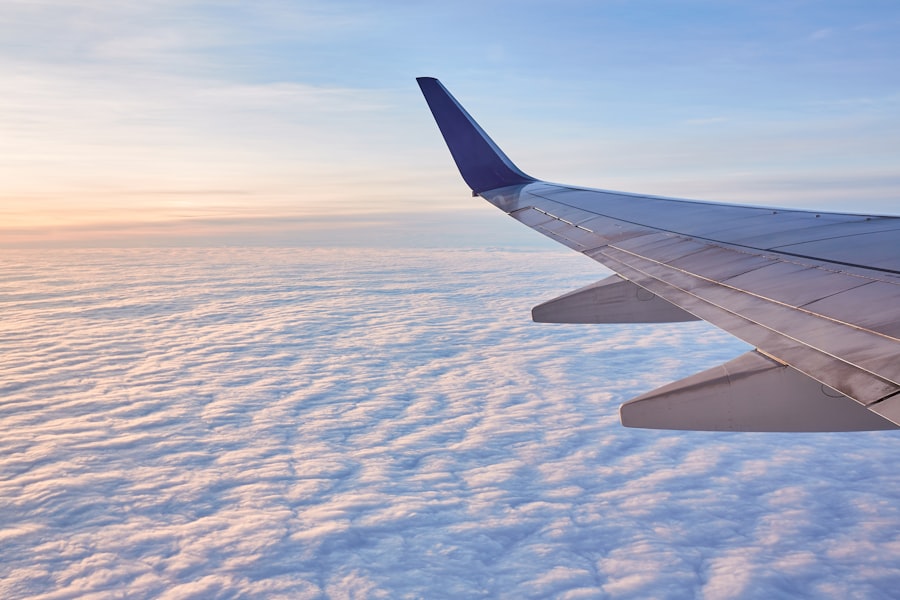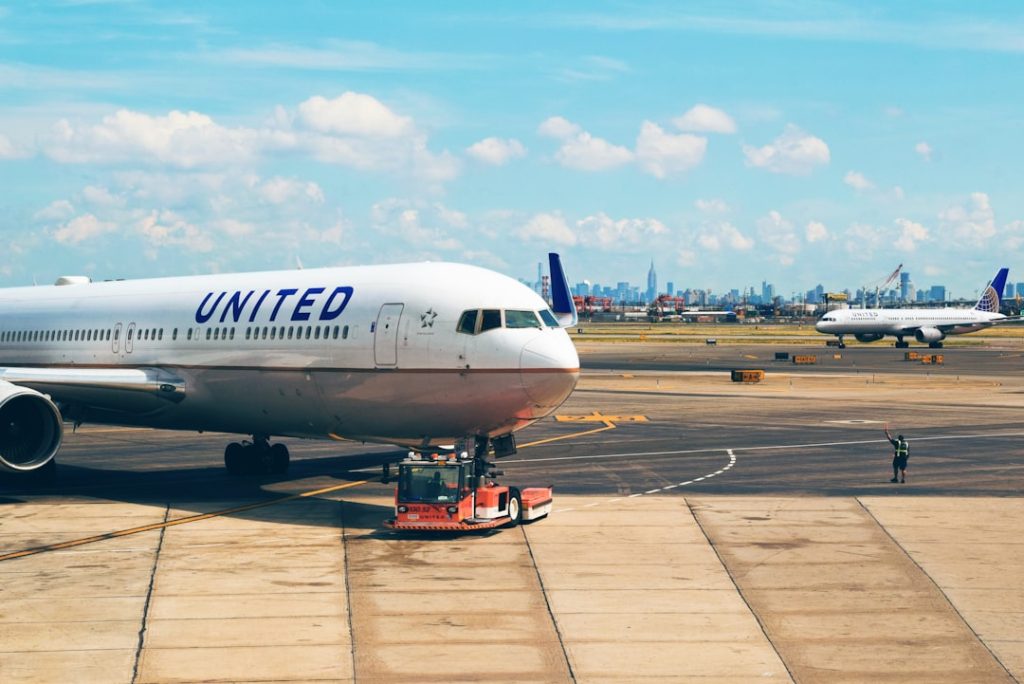The quest for speed in aviation has been a driving force since the dawn of flight. The early 20th century saw the Wright brothers achieve powered flight in 1903, but it wasn’t long before aviators began pushing the boundaries of speed. By the 1920s and 1930s, aircraft like the Supermarine S.6B and the Hughes H-1 Racer were setting records that would stand for years.
The S.6B, designed for the Schneider Trophy races, reached speeds of over 400 miles per hour, showcasing the potential of aerodynamics and engineering in aviation. This period marked a significant shift as engineers began to understand the principles of high-speed flight, leading to innovations that would lay the groundwork for future developments. World War II accelerated advancements in aircraft design and technology, with military needs driving the development of faster and more powerful planes.
The introduction of jet propulsion in the late 1940s revolutionized aviation, allowing aircraft to exceed the speeds of their piston-engine predecessors. The Bell X-1, piloted by Chuck Yeager in 1947, became the first aircraft to break the sound barrier, reaching a speed of Mach 1.06. This milestone not only marked a new era in aviation but also ignited a race among nations to develop faster and more capable military aircraft.
The Cold War further fueled this competition, leading to the creation of iconic jets like the North American F-100 Super Sabre and the Lockheed SR-71 Blackbird, both of which pushed the limits of speed and performance.
Key Takeaways
- The history of fastest airplanes dates back to the early 20th century, with the development of aircraft like the Curtiss R3C and the Supermarine S.6B.
- The development of the fastest airplane has been driven by advancements in aerodynamics, engine technology, and materials, leading to breakthroughs like the Lockheed SR-71 Blackbird and the North American X-15.
- The design and features of the fastest airplane prioritize speed, maneuverability, and stability at high velocities, often incorporating sleek, streamlined shapes and advanced propulsion systems.
- The speed and performance of the fastest airplane are unparalleled, with top speeds exceeding Mach 3 and altitudes reaching the edge of space, enabling rapid reconnaissance and research capabilities.
- The impact of the fastest airplane on aviation has been significant, influencing military strategy, scientific research, and commercial aviation, while also inspiring future generations of engineers and pilots.
The Development of the Fastest Airplane
The development of the fastest airplane is a story intertwined with technological innovation, military necessity, and human ambition. The Lockheed SR-71 Blackbird, introduced in the 1960s, epitomizes this narrative. Designed for reconnaissance missions during the Cold War, the SR-71 was engineered to fly at altitudes exceeding 85,000 feet and speeds over Mach 3.
Its development was driven by the need for intelligence-gathering capabilities that could evade enemy defenses. Engineers faced numerous challenges, including heat generated by air friction at such high speeds and the need for materials that could withstand extreme temperatures. The use of titanium and advanced aerodynamics allowed the SR-71 to achieve unprecedented performance levels.
In parallel with military advancements, civilian aviation also sought to break speed records. The Concorde, a turbojet-powered supersonic passenger airliner, was developed in collaboration between British and French engineers. First entering service in 1976, it could cruise at speeds of Mach 2.04, significantly reducing transatlantic flight times.
The Concorde’s development was not without its challenges; economic viability, noise regulations, and safety concerns all played roles in shaping its operational history. Despite these hurdles, it represented a significant leap forward in commercial aviation technology and served as a symbol of luxury travel for nearly three decades.
The Design and Features of the Fastest Airplane

The design of the fastest airplanes is characterized by a unique blend of aerodynamics, materials science, and engineering precision. For instance, the Lockheed SR-71 Blackbird features a sleek fuselage designed to minimize drag while maximizing lift at high speeds. Its distinctive shape includes sharply pointed nose cones and sharply swept wings that help manage airflow efficiently.
Additionally, the aircraft’s design incorporates features such as variable geometry air intakes that adjust to optimize engine performance across different speeds. Materials used in constructing these high-speed aircraft are equally critical to their performance. The SR-71 utilized titanium extensively due to its strength-to-weight ratio and ability to withstand high temperatures generated during flight.
This choice of material was essential not only for structural integrity but also for maintaining performance at extreme altitudes. Similarly, the Concorde’s design included advanced composite materials that contributed to its aerodynamic efficiency while ensuring passenger safety and comfort. The integration of cutting-edge technology in avionics and control systems further enhances these aircraft’s capabilities, allowing for precise navigation and stability at high speeds.
The Speed and Performance of the Fastest Airplane
| Parameter | Value |
|---|---|
| Maximum Speed | 3,530 km/h (2,193 mph) |
| Service Ceiling | 85,000 ft (25,900 m) |
| Thrust | 54,750 lbf (243 kN) per engine |
| Range | 4,000 nmi (7,400 km) |
| Length | 73 ft 10 in (22.5 m) |
Speed is often regarded as the defining characteristic of an airplane’s performance, and this is particularly true for record-setting aircraft like the Lockheed SR-71 Blackbird. With a maximum speed exceeding Mach 3.3 (approximately 2,200 miles per hour), it remains one of the fastest air-breathing manned aircraft ever built. This extraordinary speed allowed it to outrun surface-to-air missiles and interceptors during its operational lifetime, making it an invaluable asset for reconnaissance missions.
In contrast, the Concorde’s cruising speed of Mach 2.04 allowed it to complete transatlantic flights in under four hours, significantly reducing travel time between major cities like New York and London. While not as fast as military jets like the SR-71, its speed was revolutionary for commercial aviation, enabling passengers to experience supersonic travel in relative comfort. The performance metrics of these aircraft are not solely defined by speed; factors such as altitude capability, range, and maneuverability also play crucial roles in their operational effectiveness.
The Impact of the Fastest Airplane on Aviation
The impact of the fastest airplanes on aviation extends beyond mere speed records; they have fundamentally altered perceptions of what is possible in flight. The technological advancements pioneered by aircraft like the SR-71 have influenced subsequent generations of military and civilian aircraft design. Innovations in materials science, aerodynamics, and propulsion systems have trickled down into commercial aviation, enhancing safety and efficiency across the industry.
Moreover, these aircraft have inspired a new generation of engineers and aviators to push boundaries further. The legacy of supersonic flight continues to resonate today as companies explore new designs for next-generation supersonic jets aimed at reintroducing commercial supersonic travel. The lessons learned from past endeavors inform current projects that seek to balance speed with environmental considerations and economic viability.
The Pilots and Crew of the Fastest Airplane

The pilots and crew who operate the fastest airplanes are often regarded as elite professionals within the aviation community. Flying an aircraft like the SR-71 requires not only exceptional skill but also extensive training in high-performance flight operations. Pilots undergo rigorous preparation that includes simulations and physical conditioning to handle the unique challenges posed by high-speed flight at extreme altitudes.
The camaraderie among crew members is also a vital aspect of operating these advanced aircraft. In missions involving reconnaissance or intelligence gathering, teamwork is essential for success. Each crew member plays a specific role, from pilots navigating complex airspace to intelligence officers analyzing data collected during flights.
This collaborative environment fosters a culture of excellence where every individual contributes to achieving mission objectives.
The Future of Fastest Airplanes
As we look toward the future of aviation, the pursuit of speed remains a tantalizing goal for engineers and designers worldwide. Emerging technologies such as hypersonic flight—defined as speeds exceeding Mach 5—are being actively researched by various organizations, including government agencies and private companies. Hypersonic vehicles promise not only unprecedented speeds but also new possibilities for global travel and military applications.
Additionally, advancements in sustainable aviation technologies are shaping discussions around future aircraft design. As environmental concerns become increasingly pressing, engineers are exploring ways to achieve high speeds while minimizing carbon footprints. Concepts such as electric propulsion systems or hybrid designs may play a role in creating faster airplanes that align with global sustainability goals.
The Legacy of the Fastest Airplane
The legacy of the fastest airplanes is multifaceted, encompassing technological innovation, cultural impact, and inspiration for future generations. Aircraft like the Lockheed SR-71 Blackbird have become icons not only for their speed but also for their role in shaping modern aviation history. They serve as reminders of human ingenuity and determination to push beyond perceived limits.
Moreover, these aircraft have left an indelible mark on popular culture, inspiring films, literature, and even art that celebrate their achievements. As we continue to explore new frontiers in aviation technology, the lessons learned from past endeavors will undoubtedly inform future innovations—ensuring that the legacy of speed in aviation endures for years to come.


